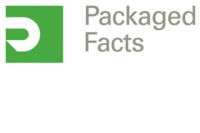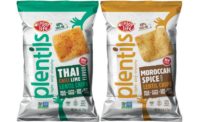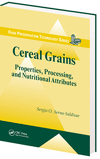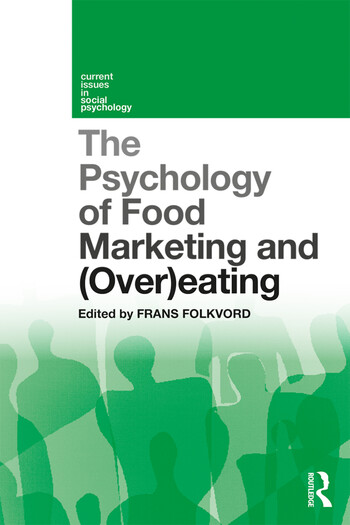Cereal as a Snack
From the breakfast table to snacking staple: 43% of US cereal consumers eat cereal as a snack at home

While it has long maintained a seat at the kitchen table, it seems cereal may be moving beyond breakfast and even beyond the bowl. New research from Mintel reveals that more than two in five (43%) US cereal consumers eat cereal as a snack at home*, ranking as the second most common reason to consume cereal, aside from breakfast (89%). What’s more, almost one in five (17%) say they have cereal as a snack away from home and 10% enjoy cereal on the go.
Younger generations are leading the revolution when it comes to snacking on cereal. In fact, more than half (56%) of Millennials (aged 23-40) say they have eaten cereal as a snack at home, compared to just 32% of Baby Boomers (aged 53-71). Meanwhile, the iGeneration (aged 18-22**) are the most likely cohort (21%) to enjoy cereal on the go.
It’s hard to deny cereal’s snackability, with three quarters (74%) of cereal consumers agreeing that it is great for a snack. But gone are the days of bland, flavorless options as many view cereal as a way to indulge in a guilt-free treat (49%). And with just 14% of cereal consumers saying they buy single-serving varieties, packaging innovation may be a key opportunity as two in five (40%) agree that cereals should be more portable.
“While breakfast is the most common occasion for eating cereal and nearly universal across age groups, snacking on cereal may offer greater potential for reinvigorating category growth, especially among younger adults. Considering how popular snacking is among Millennials, there could be an opportunity to increase snacking and on-the-go consumption of cereal among younger generations,” said John Owen, Senior Food and Drink Analyst at Mintel. “Many consumers view cereal as a guilt-free treat, suggesting that a bowl of cereal could be positioned as just as satisfying as, but more sensible than, other more dessert-like options. Positioning cereal as an anytime, tasty snack could be a way to tap into the belief that cereal is a permissible indulgence.”
Whether hot or cold, it seems that cereal is a household staple, with nearly nine in 10 (86%) Americans saying they’ve had cold cereal, and more than two thirds (68%) saying they’ve had hot cereal, in the last year***. But while lightly sweetened cereal is the most popular choice (60%), interest in healthy cereal is on the rise. Today, many cereal consumers say that, compared to last year, they’re eating more ancient grain-based cereal (49%), muesli (40%), granola (36%) and high-fiber cereal (33%).
Despite the fact that three in 10 (29%) cereal consumers say they are eating less heavily-sweetened cereals, the same amount (30%) are choosing cereal that tastes good regardless of how nutritious it is. Indeed, when it comes to selecting cereals, consumers consult their taste buds first as taste is the most important factor consumers consider for both cold (80%) and hot (77%) cereal.
While consumers are still sweet on cereal, it seems it may no longer be fit for the most important meal of the day. More than six in 10 (61%) cereal eaters agree that they wish cereals kept them full longer, and over half (56%) say that they wish cereals gave them more energy. When searching for a filling breakfast to start the day, hot cereal may be the answer as 58% of cereal consumers agree that hot cereal is more filling than cold cereal.
“Cereal remains king of the breakfast table for now, but it's reign may be coming to an end as it's missing the mark for many consumers, specifically when it comes to satiety and portability. The fact that cereal consumption remains high suggests that the key to reenergizing sales could lie in encouraging current cereal consumers to eat it in a wider variety of situations and leveraging its strongest asset—great taste,” continued Owen. “Taste plays an important role and may be the driving force behind snacking on cereal outside of breakfast. While younger consumers may question the suitability of heavily sweetened cereal for breakfast when compared to more satiating or protein-rich alternatives, they may consider it to be a perfectly acceptable snack or treat.”
As more consumers prioritize quick, healthy, portable breakfast foods, the cereal category continues to decline. Total US sales of hot and cold cereal have declined nine% since 2012 to reach an estimated $10.5 billion in 2017. Cold cereal, which makes up 87% of the market, has seen sales decline 11% in the last five years, with sales estimated to reach $9.1 billion in 2017. Meanwhile, sales of hot cereal (13% market share) are forecast to reach $1.3 billion this year.
“While cereal remains a ubiquitous presence in American pantries, sales are forecast to continue on a downward slide as consumers gravitate toward a widening array of breakfast alternatives seen as more filling, nutritious and convenient, such as yogurt, bars, frozen breakfast entrees and handhelds. However, opportunities exist for marketers to both accentuate positives and, to the degree possible, eliminate negatives, by emphasizing great taste and a greater variety of occasions to encourage consumers to purchase and eat more cereal,” concluded Owen.
Looking for a reprint of this article?
From high-res PDFs to custom plaques, order your copy today!








